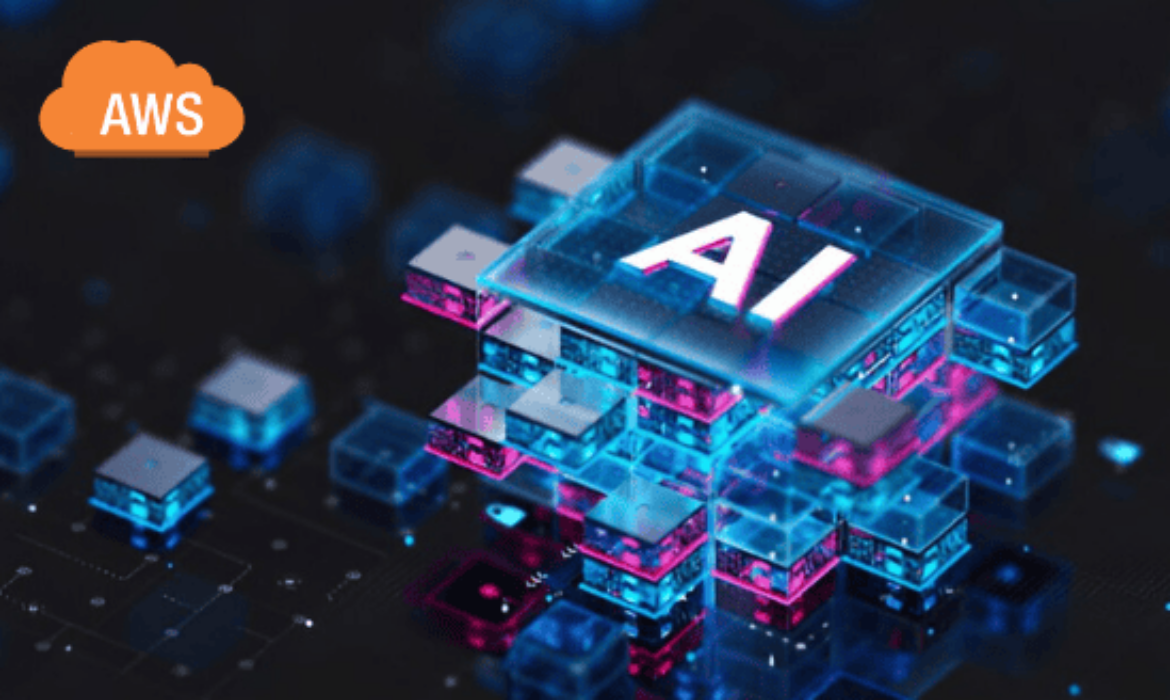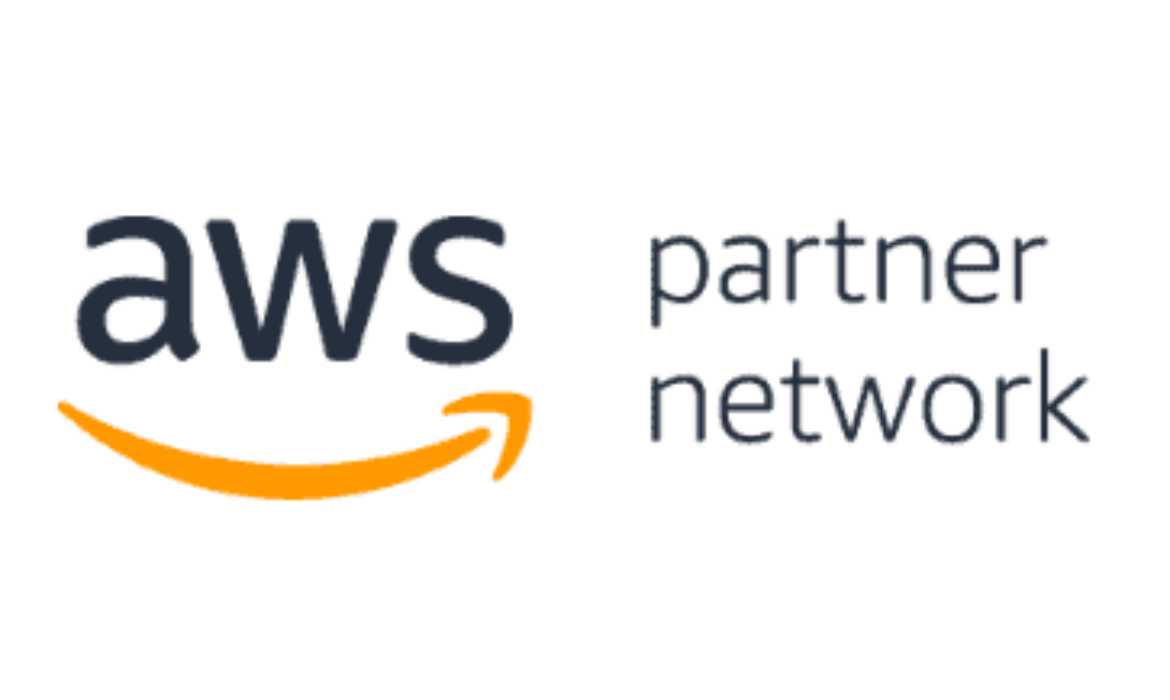Digital Twins and IoT: Powering Smart Innovations
Imagine a bustling city where technology weaves an invisible web, responding to every citizen’s need with effortless precision. Traffic lights adjust intuitively, easing congestion before it forms. Energy grids anticipate demand spikes, seamlessly balancing supply to prevent outages. Public transport flows smoothly, routes adjusting in real-time to optimize commuter journeys. How is this possible? Meet the digital twins—virtual replicas of our physical world, meticulously crafted to mirror every detail.
Yet, these twins are not mere mirrors. They’re evolving with the help of Generative AI, transforming from static copies into dynamic problem-solvers. In high-tech factories, they predict machinery issues before they disrupt production, suggesting improvements that boost efficiency day by day. Across sprawling logistics networks, they forecast traffic and weather, guiding shipments to their destinations swiftly and on schedule.
This isn’t just progress; it’s a revolution. As Generative AI and digital twins integrate deeper into our lives, from city planning to healthcare, they’re reshaping industries with unprecedented innovation and operational prowess.
Integrating Generative AI with Digital Twins
Understanding the dynamics of IoT involves recognizing how integrating Generative AI with Digital Twins marks a profound transformation. Traditionally adept at real-time monitoring and simulation of physical assets or processes, Digital Twins now evolve into proactive decision-makers with the infusion of Generative AI.
Generative AI enhances Digital Twins by predicting behaviors and optimizing operations through comprehensive analysis of IoT-generated data. Imagine a manufacturing facility where Generative AI-powered Digital Twins not only replicate production lines but also predict maintenance needs and suggest process improvements autonomously. This collaboration significantly boosts operational efficiency by preemptively addressing challenges and optimizing resource usage.
This evolution represents more than just technical advancement; it marks a paradigm shift in how industries harness IoT capabilities. By leveraging Generative AI-enhanced Digital Twins, businesses can achieve unprecedented levels of efficiency and innovation. This advancement promises smarter, more adaptable systems within the IoT landscape, paving the way for transformative breakthroughs across diverse sectors.
Digital Twins in Action: Optimizing IoT Operations
Digital Twins are essential in IoT for enhancing operational efficiency across industries by replicating physical assets and systems, enabling real-time data simulation and insights. For example, in smart cities, Digital Twins adjust traffic flow using live IoT sensor data, optimizing urban mobility. In healthcare, they use predictive analytics to simulate patient scenarios, improving treatment and equipment maintenance. This proactive use minimizes downtime and maximizes resource efficiency, reducing costs and enhancing operations.
As IoT evolves and Digital Twins become more advanced, industries stand to benefit from significant innovations in efficiency and productivity. These integrated technologies promise transformative impacts, driving operational excellence across diverse sectors and paving the way for future advancements in IoT-driven solutions.
Smart Cities: Harmony Through Digital Twins
In the context of smart cities, digital twins revolutionize urban management by acting as virtual replicas of the city’s physical infrastructure. These digital counterparts meticulously simulate and monitor various aspects such as traffic patterns, energy usage, and public services like transportation. Powered by real-time data streamed from IoT sensors embedded throughout the city, digital twins facilitate agile decision-making and operational optimizations. For example, they can dynamically adjust traffic signal timings to alleviate congestion or reroute energy distribution to minimize waste. This proactive approach not only enhances urban efficiency and resource utilization but also improves the overall quality of life for residents. By integrating digital twins into urban planning and management, smart cities pave the way for sustainable growth and innovation, setting new standards for urban development in the digital age.
Predictive Insights: Leveraging Digital Twins in IoT Environments
In the world of IoT, Digital Twins emerge as powerful tools for predictive analytics, revolutionizing how industries optimize operations. These virtual counterparts of physical assets or processes continuously collect and analyze real-time data from IoT sensors. By harnessing this data, Digital Twins simulate various scenarios, predict future behaviors, and recommend proactive measures to enhance efficiency and performance.
Imagine a manufacturing plant where Digital Twins anticipate machinery failures before they occur, allowing for preemptive maintenance and minimizing production disruptions. In urban planning, Digital Twins can forecast traffic patterns based on historical and current data, facilitating better city management strategies. This predictive capability not only optimizes resource allocation but also fosters smarter decision-making across sectors, driving continuous improvement and innovation in IoT-enabled environments.
Applications of Digital Twins in IoT
Digital Twins are spearheading a transformative wave across industries within the IoT ecosystem. These virtual replicas of physical entities enable businesses to simulate real-world scenarios and optimize operations with unprecedented precision. In manufacturing, Digital Twins facilitate predictive maintenance, foreseeing equipment failures and optimizing production schedules to minimize downtime.
Moreover, in healthcare, Digital Twins simulate patient conditions to personalize treatment plans and predict health outcomes. Beyond these applications, Digital Twins are reshaping urban planning by modeling infrastructure performance and traffic flow, leading to more efficient city designs and management strategies. By leveraging Digital Twins, industries can achieve higher operational efficiency, reduced costs, and enhanced innovation, setting new benchmarks for performance and sustainability in the IoT era.
Implementing AI-driven Digital Twins in IoT
Implementing AI-driven Digital Twins in IoT environments presents both challenges and promising solutions. One major hurdle is the complexity of integrating diverse data streams from IoT devices into cohesive digital replicas. Ensuring seamless synchronization and real-time data processing is crucial for accurate predictive modeling and decision-making.
Moreover, maintaining data security and privacy while managing large volumes of sensitive information remains a critical concern. Solutions to these challenges include leveraging advanced AI algorithms for data fusion and anomaly detection, enhancing system interoperability through standardized protocols, and implementing robust cybersecurity measures to safeguard data integrity.
Successfully navigating these challenges enables businesses to harness the full potential of AI-driven Digital Twins. They empower organizations to achieve operational efficiencies, predictive insights, and innovation across sectors, shaping the future of IoT applications with intelligent and responsive systems.
IoT is undeniably the backbone of digital twins, forming the essential foundation upon which these advanced systems are built. Through the vast network of interconnected devices, IoT provides the real-time data necessary for creating accurate and dynamic digital replicas. This continuous data flow is crucial for the functionality of digital twins, as it allows for constant monitoring and updating of physical assets.
Advanced data analytics and AI utilize this data to generate actionable insights and predictive maintenance strategies. Cloud computing ensures seamless storage and processing of vast amounts of data, enabling real-time decision-making. By recognizing IoT as the core component, we acknowledge its pivotal role in harmonizing various technologies. This integration empowers digital twins to drive efficiency, innovation, and transformation across multiple industries. Thus, IoT stands as the cornerstone, unlocking the full potential of digital twin technology.
The Role of Amazon SageMaker in Advancing Generative AI
Amazon SageMaker is a powerful, cloud-based platform designed to make machine learning (ML) and generative AI accessible and efficient for developers. It streamlines the entire ML process, from creation and training to deployment of models, whether in the cloud, on embedded systems, or edge devices. SageMaker is a fully managed service, providing an integrated development environment (IDE) complete with a suite of tools like notebooks, debuggers, profilers, pipelines, and MLOps, facilitating scalable ML and generative AI model building and deployment.
Governance is simplified with easy access control and project transparency, ensuring secure and compliant workflows. Additionally, SageMaker offers robust tools for creating, fine-tuning, and deploying foundation models (FMs). It also provides access to hundreds of pretrained models, including publicly available FMs and generative AI models, which can be deployed with just a few clicks, making advanced ML and AI capabilities more accessible than ever. With foundation models, developers can leverage pretrained, highly sophisticated models, significantly reducing the time and resources needed for data preparation, model selection, and training. These models can be fine-tuned with specific datasets to meet unique requirements, allowing for quick and efficient customization. The streamlined development process enhances scalability and reliability, facilitating rapid deployment across cloud, edge, and embedded systems. This integration accelerates innovation and operational efficiency by providing advanced generative AI capabilities without the traditional complexity and effort.
The Role of Amazon SageMaker in Advancing Generative AI
Creating and Training Generative AI Models with SageMaker
Amazon SageMaker simplifies the creation and training of generative AI models with a robust suite of tools and services. Developers and data scientists can use Jupyter notebooks for data preparation and model prototyping, streamlining the development process. SageMaker supports a variety of generative AI techniques, including GANs and VAEs, facilitating experimentation with advanced methods.
The platform’s managed infrastructure optimizes training for scalability and speed, efficiently handling large datasets and complex computations. Distributed training capabilities further enhance performance, reducing the time required for model training. SageMaker also integrates debugging and profiling tools for real-time monitoring and fine-tuning, ensuring optimal model performance. Automated hyperparameter tuning accelerates the optimization process, improving model accuracy and efficiency. With SageMaker, organizations can leverage generative AI to innovate, enhance decision-making, and gain a competitive edge in their industries.
Deployment on the Cloud, Edge, and Embedded Systems
Amazon SageMaker enables versatile deployment of machine learning models across the cloud, edge, and embedded systems with one-click training and deployment. In the cloud, SageMaker ensures scalable, fault-tolerant deployments with managed infrastructure, freeing developers to focus on model performance.
For edge deployments, SageMaker supports real-time inference close to data sources, reducing latency and enabling swift decision-making in applications like IoT and industrial automation. This approach minimizes data transfer costs and enhances privacy by processing data locally.
SageMaker also caters to embedded systems, optimizing models for performance on resource-constrained devices. This capability is crucial for applications in healthcare, consumer electronics, and other sectors requiring efficient use of computational resources. With SageMaker, organizations can seamlessly deploy machine learning models across diverse environments, leveraging its flexibility to drive innovation and operational efficiency.
Integrated Tools for Efficient Model Development
Amazon SageMaker integrates a suite of tools designed to streamline and enhance the process of developing machine learning models. From data preparation to model deployment, SageMaker provides a cohesive environment that includes Jupyter notebooks for prototyping, debugging tools for real-time monitoring, and automated pipelines for seamless workflow management. These integrated tools simplify complex tasks, allowing developers and data scientists to focus more on refining model accuracy and less on managing infrastructure.
Furthermore, SageMaker offers built-in support for version control, collaboration, and model governance, ensuring consistency and transparency throughout the development lifecycle. This comprehensive approach not only accelerates model iteration and deployment but also promotes best practices in machine learning development, ultimately driving greater efficiency and innovation in AI-driven applications.
Ensuring Governance and Security in ML Workflows
Amazon SageMaker, in partnership with AWS, prioritizes stringent governance and security across machine learning (ML) processes. Leveraging AWS Identity and Access Management (IAM), SageMaker ensures precise control over who can access sensitive data and models, ensuring compliance with industry regulations and minimizing the risk of unauthorized access.
Additionally, SageMaker employs robust encryption protocols for data both at rest and in transit, safeguarding information integrity throughout the ML lifecycle. AWS Key Management Service (KMS) further enhances security by securely managing encryption keys, reinforcing the protection of ML operations and fostering a secure environment for deploying AI solutions.
Access to Pretrained Models and Foundation Models
Amazon SageMaker offers developers extensive access to pretrained models and foundation models (FMs), simplifying the integration of advanced AI capabilities into applications. Through SageMaker’s marketplace, developers can swiftly deploy pretrained models across diverse fields like natural language processing and computer vision. This streamlines the development process, accelerating the rollout of AI-driven solutions.
Additionally, SageMaker supports deployment of publicly available foundation models (FMs), which are large-scale models trained on extensive datasets. These FMs provide robust starting points for custom model development, allowing organizations to build upon established AI frameworks efficiently. By facilitating access to pretrained and foundation models, SageMaker empowers businesses to innovate rapidly and deploy sophisticated AI functionalities, driving progress across sectors such as healthcare, finance, and retail.
Conclusion
In a nutshell, Amazon SageMaker revolutionizes the machine learning and generative AI landscape by offering a comprehensive, cloud-based platform that simplifies the entire ML workflow. From creation and training to deployment, SageMaker provides robust tools and a fully managed environment, facilitating scalable and efficient model development. With integrated access to foundation and pretrained models, developers can quickly fine-tune and deploy sophisticated AI solutions across cloud, edge, and embedded systems. This streamlined process enhances innovation and operational efficiency, making advanced AI capabilities more accessible and driving progress across various industries.
Top 5 Strategies AWS Partners Use to Leverage AWS Infrastructure for Generative AI
Discover the transformative power of AWS in scaling generative AI. From groundbreaking networking advancements to revolutionary data center strategies, AWS is continuously enhancing its infrastructure. These innovations not only bolster the capability but also redefine the scalability of generative AI solutions. Embrace a future where AWS sets the benchmark in cloud-based technologies, empowering businesses to harness the full potential of artificial intelligence at unprecedented scales.
Generative artificial intelligence (AI) has rapidly revolutionized our world, enabling both individuals and enterprises to enhance decision-making, transform customer experiences, and foster creativity and innovation. However, the robust infrastructure supporting this powerful technology is the culmination of years of innovation. This sophisticated foundation allows generative AI to thrive, demonstrating that behind every breakthrough is a history of dedicated advancement and development. In this blog, we’ll explore the top five strategies AWS partners use to maximize AWS infrastructure for generative AI, explained in a way that anyone can understand.
1. Harnessing Low-Latency, High-Performance Networking
Generative AI models rely on massive amounts of data to learn and generate accurate predictions. Efficiently managing and processing this data requires advanced networking technologies that facilitate fast and reliable data movement across the cloud infrastructure. AWS partners leverage these specialized networking solutions to optimize performance and enhance the capabilities of their generative AI applications.
Elastic Fabric Adapter (EFA): EFA acts as a super-fast highway for data, enabling rapid data transfer by bypassing traditional network bottlenecks. When training generative AI models, which often involves processing large datasets and requiring frequent communication between multiple servers, EFA ensures data reaches its destination swiftly. This accelerated data movement is crucial for training complex AI models efficiently.
Scalable Reliable Datagram (SRD): SRD functions like a high-speed courier service for data packets, ensuring quick and reliable delivery. Working in tandem with EFA, SRD guarantees that data packets are not only transferred rapidly but also consistently, which is vital for maintaining the accuracy and performance of AI models. This combination of speed and reliability is essential for efficient model training and inference.
UltraCluster Networks: Imagine a vast network of interconnected supercomputers, each linked by ultra-fast and dependable cables. UltraCluster Networks are designed to support thousands of high-performance GPUs (graphics processing units), providing the computational power needed for training large-scale generative AI models. These networks offer ultra-low latency, meaning there is minimal delay in data transfer, significantly accelerating the training process and enabling faster model iterations.
2. Enhancing Energy Efficiency in Data Centers
Operating AI models demands substantial electrical power, which can be costly and environmentally impactful. AWS partners leverage AWS’s advanced data centers to boost energy efficiency and reduce their environmental footprint.
Innovative Cooling Solutions: Data centers house thousands of servers that generate considerable heat during operation. AWS employs advanced air and liquid cooling technologies to efficiently regulate server temperatures. Liquid cooling, resembling a car’s radiator system, effectively manages heat from high-power components, significantly lowering overall energy consumption.
Environmentally Responsible Construction: AWS prioritizes sustainability by constructing data centers with eco-friendly materials such as low-carbon concrete and steel. These materials not only diminish environmental impact during construction but also throughout the data centers’ operational life. This commitment helps AWS partners in cutting down carbon emissions and promoting environmental responsibility.
Simulation and Optimization: Prior to constructing a new data center, AWS conducts detailed computer simulations to predict and optimize its performance. This simulation-driven approach enables AWS to strategically place servers and cooling systems, maximizing operational efficiency. Similar to planning a building’s layout in a virtual environment, this ensures minimal energy usage and operational costs while maintaining optimal performance.
3. Ensuring Robust Security
Security is paramount for AWS partners, particularly when handling sensitive data essential for generative AI models. AWS implements a suite of advanced security measures to protect data and ensure compliance with stringent regulations.
AWS Nitro System: Serving as a vigilant guardian, the AWS Nitro System enforces rigorous isolation between customer workloads and AWS infrastructure. It features secure boot capabilities that prevent unauthorized software from executing on servers, thereby maintaining data integrity and confidentiality.
Nitro Enclaves: Within servers, Nitro Enclaves establish secure, isolated environments. Integrated with AWS Key Management Service (KMS), they encrypt data during processing to create a secure enclave for sensitive information, analogous to a digital safe, shielding it from exposure.
End-to-End Encryption: AWS employs robust encryption methods to secure data both at rest and in transit across its infrastructure. This comprehensive approach ensures data remains protected with stringent access controls, bolstering security against unauthorized access.
Compliance and Certifications: AWS adheres strictly to global security standards and holds numerous certifications, underscoring its commitment to data protection and regulatory compliance. These certifications reassure customers of AWS’s capability to safeguard their data with the highest security measures in place.
4. Harnessing Specialized AI Chips
Efficient operation of AI models relies heavily on specialized hardware. AWS partners harness purpose-built AI chips from AWS to optimize the performance and cost-effectiveness of their generative AI applications.
Strategic Collaborations: AWS collaborates closely with industry leaders such as NVIDIA and Intel to provide a diverse range of accelerators. These collaborations ensure that AWS partners have access to cutting-edge hardware tailored to their specific AI needs.
Continuous Innovation: AWS continues to lead in AI hardware development. For example, the upcoming Trainium2 chip promises even faster training speeds and improved energy efficiency. This ongoing innovation enables AWS partners to maintain a competitive advantage in the dynamic field of AI.
5. Enhancing Scalability in AI Infrastructure
Scalability is crucial for the success of generative AI applications, which often face unpredictable computing demands. AWS provides a versatile and resilient infrastructure that empowers partners to dynamically adjust resources to meet evolving requirements.
Auto Scaling: AWS’s Auto Scaling feature automatically adjusts computing resources based on application demand. When an AI workload requires more processing power, Auto Scaling efficiently adds servers to maintain optimal performance. This capability ensures consistent application responsiveness and efficiency, supporting uninterrupted operations.
Elastic Load Balancing (ELB): ELB evenly distributes incoming traffic across multiple servers to prevent any single server from becoming overwhelmed. By intelligently distributing workloads, ELB optimizes resource allocation, enhancing the overall performance and reliability of AI applications. This ensures seamless operation even during periods of peak usage.
Amazon S3 (Simple Storage Service): S3 offers scalable storage solutions for securely storing and retrieving large volumes of data as needed. Acting as a flexible digital repository, S3 effectively manages diverse data requirements, seamlessly supporting the storage and retrieval needs of AI applications.
Amazon EC2 (Elastic Compute Cloud): EC2 provides resizable compute capacity in the cloud, enabling partners to deploy and scale virtual servers rapidly in response to fluctuating workload demands. This flexibility is crucial for iterative model testing, experimentation, and efficient scaling of production environments, facilitating agile development and deployment of AI applications.
Conclusion
AWS Partner Companies are leveraging AWS’s advanced infrastructure to push the boundaries of what’s possible with generative AI. By utilizing low-latency networking, enhancing energy efficiency, ensuring robust security, leveraging specialized AI chips, and implementing scalable infrastructure, they can deliver high-performance, cost-effective, and secure AI solutions. These strategies not only help in achieving technological advancements but also ensure that AI applications are sustainable and accessible to a wide range of industries. As generative AI continues to evolve, AWS and its partners will remain at the forefront, driving innovation and transforming how we interact with technology.
Everything You Need To know About Amazon Connect
Amazon Web Services (AWS) has solidified its position as a leading cloud service provider, offering businesses a wide array of tools for communication, data management, and beyond. At the forefront of these services is Amazon Connect, a robust omnichannel contact center solution designed to elevate customer service and operational efficiency. Powered by AI, Amazon Connect equips businesses with scalable tools for managing customer interactions seamlessly across various channels. Discover how Amazon Connect revolutionizes customer engagement and enhances organizational productivity in this comprehensive guide.
What is AWS Connect?
Amazon Web Services (AWS) has firmly established itself as one of the most versatile and reliable cloud service providers globally. Over the years, AWS has expanded its offerings to provide businesses with a robust suite of tools for communication, data management, analytics, and more. Among these offerings is Amazon Connect, a comprehensive omnichannel contact center service that aims to provide businesses of all sizes with a powerful, easy-to-use cloud-based contact center that enhances customer service and operational efficiency.
Amazon Connect is a well designed AI-powered cloud contact center, to help companies meet and exceed evolving customer expectations. It offers omnichannel support, productivity tools for agents, and advanced analytics. With Amazon Connect, businesses can quickly set up a fully functional cloud contact center that scales effortlessly to accommodate millions of customers worldwide. This platform equips organizations with essential customer experience (CX) management tools, enabling them to deliver superior service and stay competitive in the dynamic market landscape.
Features for Enhanced Customer Engagement & Operational Efficiency
1. Unified Agent Workspace and Task Management
Amazon Connect consolidates agent-facing tools into a single workspace, enhancing efficiency with real-time case information and AI-driven recommendations. Agents manage tasks alongside calls and chats, ensuring streamlined workflows and effective customer service.
2. Advanced Customer Interaction Tools
Utilizing AI-powered chatbots and messaging, Amazon Connect supports seamless customer interactions across various channels like web chat, SMS, and third-party apps. Self-service capabilities empower customers while preserving context for agents, ensuring smooth transitions and personalized service.
3. Comprehensive Performance Monitoring with Contact Lens
Contact Lens monitors and improves contact quality and agent performance through conversational analytics. It analyzes customer interactions for sentiment, compliance, and trends, supporting agent evaluations with AI-driven insights and screen recordings.
4. Intelligent Forecasting and Resource Management
Machine learning-powered forecasting, capacity planning, and scheduling tools optimize staffing levels and agent productivity. They predict contact volumes, allocate resources efficiently, and generate flexible schedules aligned with service-level targets.
5. Enhanced Security and Customer Insights
Amazon Connect Voice ID provides real-time caller authentication and fraud detection, ensuring secure interactions. Customer Profiles integrate external CRM data to create comprehensive customer views, enabling agents to deliver personalized service and resolve issues effectively.
Recent Developments in Amazon Connect and AWS
Amazon Web Services (AWS) is driving customer interactions forward with the latest enhancements to Amazon Connect, elevating customer service and technological innovation. Here are the key updates that underscore significant progress in this area:
1. Amazon Q: AI-Powered Virtual Assistant
Amazon Q, an AI-powered virtual assistant, enhances customer interactions by engaging in natural conversations, generating personalized content, and utilizing data for efficient communication. With over 40 integrated connectors, Amazon Q customizes interactions and resolves issues specific to business needs.
2. Real-Time Barge-in Capability for Chat Support
Amazon Connect’s real-time barge-in capability allows managers to swiftly join ongoing customer service chats, enabling immediate assistance for complex issues and enhancing overall support efficiency.
3. Outbound Campaigns Voice Dialing API
The outbound campaigns voice dialing API supports large-scale voice outreach, boosting communication options and agent productivity within Amazon Connect.
4. Enhanced Granular Access Controls
Amazon Connect introduces enhanced access controls for historical metrics, ensuring secure and managed data access restricted to authorized personnel only.
5. API-Driven Contact Priority Updates
Businesses can now programmatically adjust contact priorities via an API, facilitating real-time queue management from custom dashboards to address urgent issues promptly.
6. Agent Proficiency-Based Routing
Amazon Connect enables routing based on agent proficiencies, directing customers to the most qualified agents for efficient and effective interactions.
7. Zero-ETL Analytics Data Lake
The Zero-ETL analytics data lake in Amazon Connect bypasses traditional ETL processes, making contact center data access and management simpler. This accelerates data analysis, enabling businesses to derive insights for faster, more informed decision-making swiftly.
8.No-Code UI Builder for Guided Experiences
Amazon Connect’s no-code UI builder empowers users to design step-by-step guides effortlessly through a user-friendly drag-and-drop interface. This feature not only streamlines the creation of interactive guides but also improves overall agent interface management by allowing for intuitive customization and updates without requiring extensive technical expertise.
9. Integrated In-App, Web, and Video Calling
In-app, web, and video calling integration in Amazon Connect facilitates personalized customer interactions directly through various platforms, improving engagement and convenience.
10. Generative AI-Powered Customer Profiling
Amazon Connect utilizes generative AI for rapid customer data mapping, delivering detailed profiles swiftly to enhance service delivery and customer satisfaction.
11. Efficient Two-Way SMS Communication
The two-way SMS integration enables efficient customer issue resolution via text, providing a convenient communication channel that enhances accessibility and responsiveness within Amazon Connect.
Why is it important to work with AWS Partner Company?
Partnering with an AWS Partner Company grants businesses access to certified experts with specialized skills essential for maximizing AWS’s vast array of services. These partners possess in-depth knowledge of best practices and architectural patterns, ensuring top-notch performance, robust security, and cost efficiency. By engaging with a certified partner, organizations can expedite their cloud adoption journey, reduce risks, and implement scalable, reliable solutions specifically designed to meet their unique requirements.
Moreover, AWS Partner Companies offer end-to-end support, covering everything from initial consultation to deployment and ongoing management. They utilize advanced tools and methodologies to streamline processes such as migration, integration, and optimization. Their strong relationship with AWS provides businesses with priority access to the latest features, updates, and technical support, enabling them to stay competitive in a swiftly evolving cloud environment.
Optimizing Generative AI: Harnessing Flexibility in Model Selection
In the dynamic world of artificial intelligence, the key to unlocking unparalleled performance and innovation lies in selecting the right models for generative AI applications. Among the leading models, OpenAI’s GPT-4 stands out for its exceptional ability in natural language understanding and generation. It is widely used for developing sophisticated chatbots, automating content creation, and performing complex language tasks. Google’s BERT, with its bidirectional training approach, excels in natural language processing tasks like question answering and language inference, providing deep contextual understanding.
Another noteworthy model is OpenAI’s DALL-E 2, which generates high-quality images from textual descriptions, opening up new possibilities in creative fields such as art and design. Google’s T5 model simplifies diverse NLP tasks by converting them into a unified text-to-text format, offering versatility in translation, summarization, and beyond. For real-time object detection, the YOLO model is highly regarded for its speed and accuracy, making it ideal for applications in image and video analysis. Understanding and selecting the appropriate model is crucial for optimizing generative AI solutions to meet specific needs effectively.
 The Significance of Model Selection in Generative AI
The Significance of Model Selection in Generative AI
In the ever-evolving landscape of generative AI, a one-size-fits-all approach simply doesn’t cut it. For businesses eager to leverage AI’s potential, having a variety of models at their disposal is essential for several key reasons:
Drive Innovation
A diverse array of AI models ignites innovation. Each model brings unique strengths, enabling teams to tackle a wide range of problems and swiftly adapt to changing business needs and customer expectations.
Gain a Competitive Edge
Customizing AI applications for specific, niche requirements is crucial for standing out in the market. Whether it’s enhancing chat applications to answer questions or refining code to generate summaries, fine-tuning AI models can provide a significant competitive advantage.
Speed Up Market Entry
In today’s fast-paced business world, speed is critical. A broad selection of models can accelerate the development process, allowing businesses to roll out AI-powered solutions quickly. This rapid deployment is particularly vital in generative AI, where staying ahead with the latest innovations is key to maintaining a competitive edge.
Maintain Flexibility
With market conditions and business strategies constantly shifting, flexibility is paramount. Having access to various AI models allows businesses to pivot swiftly and effectively, adapting to new trends or strategic changes with agility and resilience.
Optimize Costs
Different AI models come with different cost implications. By choosing from a diverse set of models, businesses can select the most cost-effective options for each specific application. For example, in customer care, throughput and latency might be prioritized over accuracy, whereas, in research and development, precision is critical.
Reduce Risks
Counting solely on one AI model entails risks. A varied portfolio of models helps distribute risk, ensuring that businesses remain resilient even if one approach fails. This strategy provides alternative solutions, safeguarding against potential setbacks.
Ensure Regulatory Compliance
Navigating the evolving regulatory landscape for AI, with its focus on ethics and fairness, can be complex. Different models have different implications for compliance. A wide selection allows businesses to choose models that meet legal and ethical standards, ensuring they stay on the right side of regulations.
In summary, leveraging a spectrum of AI models not only drives innovation and competitiveness but also enhances flexibility, cost-efficiency, risk management, and regulatory compliance. For businesses looking to harness the full power of generative AI, variety isn’t just beneficial—it’s essential.
Choosing the Optimal AI Model
Navigating the expansive array of AI models can be daunting, but a strategic approach can streamline the selection process and lead to exceptional results. Here’s a methodical approach to overcoming the challenge of selecting the right AI model:
Define Your Specific Use Case
Begin by clearly defining the precise needs and objectives of your business application. Craft detailed prompts that capture the unique intricacies of your industry. This foundational step ensures that the AI model you choose aligns perfectly with your business goals and operational requirements.
Compile a Comprehensive List of Models
Evaluate a diverse range of AI models based on essential criteria such as size, accuracy, latency, and associated risks. Understanding the strengths and weaknesses of each model enables you to balance factors like precision and computational efficiency effectively.
Assess Model Attributes for Fit
Evaluate the scale of each AI model in relation to your specific use case. While larger models may offer extensive capabilities, smaller, specialized models can often deliver superior performance with faster processing times. Optimize your choice by selecting a model size that best suits your application’s unique demands.
Conduct Real-World Testing
Validate the performance of selected models under conditions that simulate real-world scenarios in your operational environment. Utilize recognized benchmarks and industry-specific datasets to assess output quality and reliability. Implement advanced techniques such as prompt engineering and iterative refinement to fine-tune the model for optimal performance.
Refine Choices Based on Cost and Deployment
After rigorous testing, refine your selection based on practical considerations such as return on investment, deployment feasibility, and operational costs. Consider additional benefits such as reduced latency or enhanced interpretability to maximize the overall value that the model brings to your organization.
Select the Model Offering Maximum Value
Make your final decision based on a balanced evaluation of performance, cost-effectiveness, and risk management. Choose the AI model that not only meets your specific use case requirements but also aligns seamlessly with your broader business strategy, ensuring it delivers maximum value and impact.
Following this structured approach will simplify the complexity of AI model selection and empower your organization to achieve significant business outcomes through advanced artificial intelligence solutions.
Conclusion
In the dynamic realm of generative AI, the strategic selection and effective utilization of AI models are pivotal for achieving significant advancements and fostering innovation. Models such as OpenAI’s GPT-4, Google’s BERT, and T5 exemplify how tailored solutions can revolutionize tasks spanning natural language processing to creative image generation and beyond.
Choosing the optimal AI model involves a meticulous approach: clearly defining specific use cases, evaluating models based on crucial factors like accuracy and scalability, and subjecting them to rigorous real-world testing. This method not only accelerates product development but also enhances adaptability, cost-efficiency, and compliance with regulatory standards. By aligning model selection closely with business objectives and operational needs, organizations not only gain a competitive edge but also mitigate potential risks effectively.
For businesses aspiring to harness the full potential of generative AI, the strategic choice of models isn’t merely advantageous—it’s imperative for driving meaningful progress and ensuring sustained success in an increasingly AI-driven era.
AWS Solutions for Healthcare Data Migration Challenges
No industry is without its challenges, and the healthcare sector is no exception, particularly when it comes to using cloud services for data migration. In depth of discussing the
What is healthcare data migration?
Healthcare data migration involves transferring extensive volumes of medical records, patient information, and various health-related data from one system to another. This complex process is vital for healthcare organizations transitioning to more advanced information systems, consolidating data from diverse sources, or adopting cloud-based solutions. As healthcare systems evolve, the ability to manage and transfer data efficiently becomes crucial. Migration ensures that all historical and current patient data are preserved and remain accessible in new systems, which is critical for delivering continuous and quality care. It also addresses the need to consolidate disparate data sources into a unified platform, simplifying data management, and improving the overall efficiency of healthcare operations.
Why is it needed?
The need for data migration in healthcare stems from several key objectives. First and foremost, it aims to enhance patient care by ensuring healthcare providers have immediate and comprehensive access to patient histories, enabling informed decision-making. Additionally, it facilitates the adoption of advanced data analytics tools, which can uncover insights for better clinical outcomes and operational efficiencies.
Data migration is also crucial for meeting regulatory requirements, such as data privacy laws and standards, ensuring compliance and protecting patient information. Effective data migration supports interoperability, allowing different healthcare systems and applications to work together seamlessly. This reduces the risk of data loss during transitions and helps healthcare organizations keep pace with technological advancements and evolving industry standards, ultimately leading to more resilient and adaptable healthcare infrastructures.
Navigating Data Migration Phases: An In-Depth Guide
Planning and Assessment
The initial phase of planning and assessment is crucial for comprehensively identifying all pertinent data sources, thereby grasping the migration scope. Clear migration objectives are set to establish precise goals, while estimating downtimes aids in mitigating operational disruptions. Moreover, selecting appropriate migration mediums and delineating project timelines ensures a structured and orderly approach to the migration process, thereby facilitating a seamless transition.
Data Profiling and Cleansing
In the data profiling and cleansing phase, a meticulous examination of data is undertaken to evaluate its format and quality thoroughly. It involves identifying and rectifying duplicate, corrupted, or inconsistent data to uphold data integrity. This step is fundamental to ensuring the accuracy and dependability of migrated data in the new system, effectively mitigating the risk of transferring flawed information.
Data Transformation and Mapping
Data transformation and mapping involve adapting data formats to align with the requirements of the target system. Guaranteeing compatibility and consistency between source and target databases is essential for seamless data integration. Additionally, remapping the data structure to correspond with the target database schema contributes to maintaining data integrity throughout the migration process.
Data Migration Execution:
Following the completion of planning and preformatting, the actual data migration and synchronization commence. This phase encompasses transferring data from the source to the target system while minimizing disruptions to ongoing operations. Continuous monitoring and validation play a pivotal role in promptly identifying and resolving any issues or errors, thereby ensuring a successful transition to the new system with precise and readily accessible data.
Challenges facing while migrating the data and their solutions
Meeting Compliance Standards
The introduction of new technologies in the healthcare sector presents a significant hurdle in adhering to data privacy regulations such as HIPAA. Compliance with these regulations is especially challenging during migrations due to the transfer of protected health information (PHI).
Ensuring compliance entails securely transferring data via encryption and vendor compliance assurance. This involves encrypting the data entirely and verifying that the database vendor meets HIPAA compliance standards. Furthermore, it’s crucial to monitor user access to the data by implementing logging measures that capture all user interactions.
Risk of Data Breaches
Data breaches pose a critical concern during healthcare data migration on AWS due to the sensitive nature of healthcare data. Cyber attackers are attracted to this valuable information, aiming for financial gain or malicious intent. To safeguard patient information throughout the migration process, implementing security protocols like encryption and continuous monitoring is essential, reducing the risk of compromising patient privacy.
Furthermore, comprehensive data breach response plans are vital for healthcare data migration on AWS. Despite preventive measures, breaches may occur, requiring effective response mechanisms. Well-defined response plans enable organizations to promptly mitigate the impact of breaches, minimizing potential damage to operations. Proactive management of data breach risks enhances security and ensures the protection of patient data during migration on AWS.
Data Interoperability
Achieving seamless data interoperability between various healthcare systems and applications poses a significant challenge during AWS data migration. The presence of disparate data formats, structures, and standards complicates the integration and exchange of data, necessitating meticulous data mapping and standardization efforts. These complexities can impede the smooth transition of information between systems, hindering efficient healthcare operations and patient care delivery.
To address these challenges, the adoption of interoperability standards such as HL7 plays a pivotal role in facilitating seamless communication and interoperability among systems. By adhering to established standards, healthcare organizations can streamline data exchange processes and enhance the compatibility of disparate systems. Leveraging HL7 and similar standards ensures that data can be accurately interpreted and exchanged, promoting efficient collaboration and information sharing across the healthcare ecosystem.
Cost Optimization
Cost optimization is a major challenge in healthcare data migration on AWS due to the significant expenses linked to transferring large data volumes. Achieving cost efficiency demands meticulous planning and strategy optimization. Healthcare organizations can ease the financial burden by adopting best practices and utilizing AWS cost management tools. These tools enable efficient resource monitoring, identification of cost-saving opportunities, and implementation of budget-friendly solutions.
Employing strategies like data compression and AWS Storage Gateway can minimize expenses during migration. Furthermore, optimizing the selection of AWS storage services based on data usage patterns can further cut costs. Leveraging AWS’s scalable infrastructure allows healthcare organizations to streamline migration processes and meet their cost optimization goals effectively.
Planned Downtime
Minimizing planned downtime in healthcare data migration is vital for uninterrupted access to patient information. Careful planning and scheduling of migration activities are essential to avoid disruptions to clinical workflows. Healthcare organizations can strategically schedule tasks during low-traffic periods to minimize operational impact. Implementing failover mechanisms and redundancy measures ensures service availability during migration. These strategies collectively enable healthcare providers to access patient data seamlessly, safeguarding continuity of care.
Data replication ensures real-time data syncing between systems, facilitating seamless failover during migration. Phased migration breaks down the process into manageable stages, maintaining service continuity. Combining these strategies with meticulous planning minimizes planned downtime in healthcare data migration. Thus, uninterrupted access to patient information and healthcare services is upheld efficiently.
Data Analysis
Effective data analysis is vital for extracting valuable insights from healthcare data migrated to AWS. Robust analytics capabilities empower healthcare organizations to improve patient outcomes and optimize healthcare delivery. Leveraging AWS analytics services like Amazon Redshift and Amazon QuickSight enables efficient analysis of large data volumes, facilitating informed decision-making to enhance patient care.
By utilizing these advanced tools, healthcare organizations can uncover trends, patterns, and correlations within their data, facilitating targeted interventions and personalized treatment plans. AWS analytics services provide scalability and flexibility, allowing organizations to manage growing data volumes and adapt to changing healthcare demands seamlessly.
In a nutshell, migrating healthcare data onto AWS comes with its fair share of hurdles, spanning regulatory compliance, security concerns, and cost management. Nevertheless, through thorough planning, stringent security protocols, adherence to industry standards, and tapping into AWS’s analytics tools, healthcare institutions can navigate these obstacles successfully. By carefully strategizing, following established guidelines, and making the most of AWS offerings, the transition of healthcare data can lead to improved patient services, streamlined operations, and adaptability in the dynamic healthcare sector.
Transitioning Generative AI from Development to Deployment on AWS
Transitioning Generative AI from development to deployment on AWS signifies a disruptive convergence of cutting-edge technologies and robust infrastructure. AWS, at the forefront, offers a comprehensive suite of services tailored meticulously to address the intricate demands of Generative AI projects. Through Amazon SageMaker, model training and deployment are streamlined, fostering continuous innovation with its integrated development environment and algorithms. Simultaneously, Amazon EC2’s elastic scalability ensures computational resources adapt dynamically to evolving AI workloads. This journey requires meticulous planning, guided by strategic optimization and an unwavering commitment to excellence in AI-driven innovation. By synergizing AWS’s capabilities with Generative AI’s transformative potential, organizations embark on a voyage of creativity, efficiency, and unprecedented success in the dynamic digital landscape.
The Promise and the Reality
In the heyday of GenAI, businesses were swept up in a whirlwind of excitement, captivated by the promises of groundbreaking capabilities in content generation, problem-solving, and task automation. Envisioning a future where chatbots engaged in seamless, human-like conversations and AI assistants effortlessly streamlined workflows, organizations embarked on a journey of boundless exploration and fascination.
However, as the initial euphoria subsided, a sobering realization dawned – the need for tangible, practical applications. The gap between the lofty promises of GenAI and the pragmatic challenges of deployment became glaringly apparent. Businesses found themselves confronted with the daunting task of bridging this divide, grappling with the complexities of translating experimental successes into real-world solutions.
Now, amidst this shifting landscape, the focus has shifted from mere experimentation to a relentless pursuit of transformative outcomes. Organizations no longer content with the novelty of GenAI, yearn for its full potential to be harnessed and realized in their day-to-day operations. It is a pivotal moment where the allure of possibility meets the demands of practicality, shaping the trajectory of GenAI from a captivating concept to a powerful tool driving tangible business impact.
Navigating the transition of GenAI from the experimental phase to production presents several challenges across diverse industries
Precision and Veracity: GenAI, particularly large language models (LLMs), may produce content that appears plausible but contains factual inaccuracies, posing risks in domains like finance and healthcare.
Fairness and Bias Mitigation: LLMs can perpetuate societal biases present in training data, necessitating continuous monitoring and careful curation of datasets to ensure equitable outcomes.
Security Measures and Controls: Implementing robust guardrails is essential to prevent GenAI from generating inappropriate or harmful content, demanding the establishment of stringent guidelines and monitoring mechanisms.
Data Protection Protocols: Safeguarding sensitive information during interactions with GenAI requires robust encryption and access controls to mitigate the risks associated with data exposure.
Addressing Latency Concerns: Optimizing infrastructure and resource allocation is crucial to mitigate latency issues, ensuring seamless user experiences and supporting real-time applications.
Domain-Specific Adaptation: Tailoring LLMs to specific industry tasks involves techniques such as RAG or fine-tuning with domain-specific data to enhance performance and relevance within a particular domain.
Bridging the Gap: Critical Factors for Effective GenAI Implementation
Transition GenAI from theoretical potential to practical application starts from understanding organizational needs to robust data infrastructure management and expertise in AI development, each factor plays a pivotal role in ensuring the success of GenAI projects. This comprehensive exploration highlights the key considerations necessary for organizations to harness the full potential of GenAI and drive meaningful outcomes as follows:
AWS Select Partner Proficiency: CloudTern’s proficiency as an AWS Select Partner underscores its expertise in leveraging AWS services for GenAI deployment. With deep knowledge of AWS solutions, CloudTern ensures cost-effective and scalable implementation of GenAI projects. By optimizing infrastructure through AWS resources, CloudTern streamlines deployment processes and enhances the agility of GenAI solutions, driving impactful outcomes for clients.
Proven Production Acumen: CloudTern’s track record of successfully deploying GenAI solutions in real-world environments showcases its proven production acumen. Through meticulous planning and execution, CloudTern navigates challenges adeptly, ensuring effective GenAI implementation. By delivering sustainable solutions that meet client needs and drive business objectives, CloudTern instills confidence and establishes itself as a trusted partner in GenAI implementation.
Data & Analytics Emphasis: CloudTern emphasizes data quality and analytics throughout the GenAI implementation process. Prioritizing data integrity, CloudTern leverages advanced analytics techniques to build GenAI solutions on reliable insights. Through sophisticated data management practices, CloudTern empowers organizations to make informed decisions, driving value creation by uncovering opportunities for innovation and optimization.
Establishing Robust Data Infrastructure: CloudTern excels in establishing robust data infrastructure to support GenAI implementation. Investing in advanced data management systems and governance frameworks, CloudTern ensures the reliability, security, and scalability of data infrastructure. Through meticulous attention to data cleanliness and bias mitigation, CloudTern safeguards data integrity, enabling accurate and reliable GenAI outcomes and driving transformative business outcomes.
Key Considerations for Transitioning to Deployment
Infrastructure Optimization: Selecting appropriate AWS services and configurations to efficiently support workload requirements is paramount. AWS offers tailored solutions such as Amazon SageMaker for model deployment and training, Amazon EC2 for scalable computing power, and Amazon S3 for data storage, ensuring optimized infrastructure for AI workloads.
Model Training and Fine-Tuning: The developmental phase requires meticulous model training and fine-tuning. AWS provides robust tools and frameworks like TensorFlow and PyTorch integrated with Amazon SageMaker, streamlining these processes. Leveraging AWS’s GPU instances can expedite model training, reducing time-to-deployment significantly.
Data Management and Security: Effective data management and security are crucial, especially with sensitive or proprietary data. AWS’s suite of services, including Amazon S3 for data storage, AWS Key Management Service (KMS) for encryption, and AWS Identity and Access Management (IAM) for access control, ensure data confidentiality and integrity throughout the deployment lifecycle.
Scalability and Performance: With fluctuating workloads or expanding user bases, scalability and performance become critical. AWS’s elastic infrastructure facilitates seamless scaling of resources to meet changing demands, ensuring optimal performance and user experience.
Monitoring and Optimization: Continuous monitoring and optimization are vital for sustained performance and reliability. AWS offers monitoring and logging services like Amazon CloudWatch and AWS CloudTrail to track system metrics, identify anomalies, and proactively troubleshoot issues. Leveraging AWS’s machine learning capabilities, such as Amazon SageMaker Autopilot, can automate model optimization and enhance performance over time.
Transitioning generative AI projects from development to deployment on AWS demands meticulous planning and execution. By leveraging AWS’s robust infrastructure and services like Amazon SageMaker, organizations can optimize model training, deployment, and scalability. Furthermore, AWS provides tools for managing data securely and implementing DevOps practices for streamlined operations. Despite challenges such as ensuring data accuracy and navigating ethical dilemmas, AWS empowers businesses to harness the full potential of generative AI, driving innovation, efficiency, and ethical AI solutions that resonate in today’s digital landscape.
Differentiating AWS’s AI/ML Ecosystem: Amazon Bedrock vs Amazon SageMaker
Cloud service providers like Amazon Web Services (AWS) acknowledge the increasing demand for artificial intelligence and machine learning capabilities, consistently unveiling new offerings. AWS distinguishes itself with a wide array of AI and ML solutions, providing businesses a versatile toolkit for optimizing operations and driving innovation. Through AWS, businesses access advanced AI and ML solutions seamlessly, sidestepping infrastructure complexities and specialized expertise. This ongoing innovation, exemplified by services like Amazon Bedrock and Amazon SageMaker, ensures businesses maintain competitiveness in a rapidly evolving landscape. These platforms empower organizations to effectively leverage cutting-edge technologies, enhancing agility and efficiency in achieving objectives and remaining at the forefront of today’s dynamic business environment.
Amazon Bedrock
Amazon Bedrock, developed by Amazon Web Services (AWS), is an extensive ecosystem aimed at optimizing machine learning (ML) operations. Tailored to meet the distinct challenges of ML workflows, Bedrock offers a comprehensive suite of tools and services. It prioritizes model governance, monitoring, and workflow automation, ensuring compliance, reliability, and efficiency across the ML lifecycle. Through robust features, Bedrock enforces regulatory standards, tracks model performance metrics, and automates critical tasks like model deployment and scaling. By enhancing governance and monitoring capabilities while streamlining ML operations, Bedrock empowers organizations to deploy ML solutions faster and at scale, fostering confidence in their endeavors. It’s features in operations are:
Model Governance Bedrock prioritizes robust model governance, implementing strict compliance measures and data protection protocols to meet regulatory standards. By establishing reliable governance mechanisms, organizations can mitigate risks associated with ML deployments and uphold privacy regulations, fostering trust and accountability in the ML process.
Monitoring Capabilities Bedrock offers extensive monitoring capabilities, empowering organizations to track model performance metrics in real-time. This proactive approach enables timely detection of issues or anomalies, ensuring the reliability and accuracy of ML models throughout their lifecycle. Through diligent monitoring, organizations can promptly address deviations from expected outcomes, optimizing model effectiveness and driving superior results.
Workflow Automation Simplifying ML operations, Bedrock automates critical workflows, including model deployment and scaling. This automation not only saves time and resources but also enhances operational efficiency. By automating repetitive tasks, Bedrock enables organizations to deploy ML solutions faster and at scale, accelerating innovation and time-to-market while maintaining consistency and reliability in the ML workflow.
In summary, Amazon Bedrock offers a comprehensive suite of features tailored to enhance ML operations, covering model governance, monitoring, and workflow automation. By leveraging Bedrock’s capabilities, organizations can ensure regulatory compliance, drive efficiency, and foster innovation in their ML initiatives with confidence.
Amazon Sagemaker
Amazon SageMaker, a fully managed service offered by AWS, simplifies the end-to-end process of creating, training, and deploying machine learning models at scale. It achieves this by integrating pre-built algorithms and frameworks into a unified platform, easing the burden of managing infrastructure setups. With its scalable infrastructure, SageMaker caters to diverse workloads, ensuring flexibility and efficiency for organizations. Managed notebooks within SageMaker enable seamless collaboration among data scientists and developers, facilitating faster model development cycles. Additionally, SageMaker automates various aspects of the machine learning workflow, streamlining processes and boosting productivity. Through its comprehensive features, SageMaker empowers businesses to deploy models rapidly and efficiently, fostering innovation and driving significant advancements in artificial intelligence applications.
Integrated Platform SageMaker consolidates the entire ML lifecycle within a unified environment, from model development and training to deployment. This integration reduces complexity and facilitates collaboration between data scientists and developers, leading to faster development cycles and promoting innovation and efficiency.
Elastic Infrastructure SageMaker’s automatic scaling capabilities adapt seamlessly to fluctuating workloads and data volumes, optimizing resource usage and cost-effectiveness. This eliminates the need for manual management of infrastructure, enabling organizations to confidently tackle large-scale ML tasks while ensuring smooth operations regardless of demand variations.
Rich Library of Algorithms and Frameworks SageMaker offers a comprehensive collection of pre-built algorithms and frameworks, simplifying the process of model development. Data scientists leverage these resources to accelerate experimentation, refine models, and gain insights, thereby speeding up the development process and enabling rapid deployment of ML solutions.
Managed Notebooks SageMaker’s managed notebooks provide a secure and reproducible environment for collaboration between data scientists and developers. With support for popular languages and version control features, these notebooks enhance productivity, streamline development workflows, and contribute to successful outcomes in ML initiatives.
Data protection and Security Requirements
Amazon Bedrock and Amazon SageMaker prioritize data protection and security throughout the ML lifecycle. They employ encryption protocols for data both in transit and at rest, ensuring sensitive information remains secure. Stringent access controls are enforced to regulate data access, bolstered by regular security audits to uphold compliance with industry standards. Moreover, both platforms offer features tailored to meet regulatory requirements, facilitating seamless adherence to data protection regulations. Integration with other AWS services further enhances security measures, fostering a comprehensive ecosystem where confidentiality, integrity, and availability of data are paramount. This commitment to robust security practices instills trust among users, enabling them to confidently leverage these platforms for their ML initiatives while mitigating risks associated with data breaches or unauthorized access.
Business Benefits of the Ecosystem
Amazon SageMaker Ecosystem As the foundational pillar of AWS’s AI/ML arsenal, SageMaker offers a holistic approach to simplifying the ML lifecycle. Its unified platform provides a seamless experience, boasting scalable infrastructure that eliminates the complexities of managing resources. With a rich selection of pre-packaged algorithms and frameworks, developers can expedite model development, focusing more on innovation rather than infrastructure. The integration of managed notebooks facilitates collaborative environments, fostering synergy between data scientists and developers throughout the ML journey. From initial ideation to model deployment, SageMaker ensures efficiency and scalability, empowering organizations to drive transformative AI initiatives with ease.
Amazon Bedrock Ecosystem Engineered to refine and optimize ML operations, the Bedrock ecosystem complements SageMaker by addressing critical aspects of model governance, monitoring, and optimization. It offers a comprehensive suite of tools meticulously crafted to meet the demands of enterprise-grade ML deployments. Through robust governance mechanisms, Bedrock ensures compliance with regulatory standards and organizational policies, mitigating risks associated with AI deployments. Its monitoring capabilities enable continuous tracking of model performance metrics, providing actionable insights for optimization and improvement. By automating key workflows, Bedrock streamlines operational processes, enhancing efficiency and scalability. This ecosystem’s holistic approach ensures the deployment of resilient and scalable ML solutions, driving sustained innovation and value creation.
The ecosystem provides businesses with streamlined ML processes, leveraging SageMaker’s unified platform for efficient model development and deployment. With scalable infrastructure and pre-packaged algorithms, organizations can accelerate innovation while managing resources effectively. Managed notebooks foster collaboration, enhancing team productivity. Meanwhile, the Bedrock ecosystem ensures compliance, monitors model performance, and automates workflows, optimizing operational efficiency. Together, these components empower businesses to deploy resilient and scalable ML solutions, driving continuous improvement and value creation.
Within the AWS ecosystem, Amazon Bedrock and Amazon SageMaker offer robust AI/ML capabilities catering to different needs. Bedrock excels in quickly integrating advanced AI features with minimal customization, thanks to its pre-configured models and streamlined workflows. Conversely, SageMaker is designed for cases requiring deep customization and model fine-tuning, providing granular control over the training process. While Bedrock prioritizes convenience and speed, SageMaker emphasizes flexibility and control, albeit with more setup and management requirements. Ultimately, the choice between Bedrock and SageMaker depends on project-specific needs, balancing the urgency for rapid deployment against the necessity for customization and control.
Cloud Automation’s Latest Innovations: AI & ML Empowerment
Cloud automation is the application of tools and processes to streamline tasks and workflows within cloud computing environments, spanning resource provisioning, performance monitoring, and cost optimization. In the contemporary cloud landscape, businesses are experiencing a surge of innovation reshaping how they leverage digital infrastructure. Hybrid cloud solutions merge private and public cloud environments, offering unparalleled adaptability and scalability. Automated cloud orchestration enhances operational efficiency through dynamic resource allocation. AI technologies drive intelligent decision-making and predictive analytics, while serverless automation simplifies infrastructure management, empowering developers to focus solely on code deployment and scalability. These advancements represent the cutting edge of cloud innovation, empowering businesses with enhanced agility, performance, and transformative capabilities across industries.
Mechanism of Cloud Automation and Coverage of Task Workflows
Cloud automation involves a blend of tools, processes, and scripts aimed at streamlining tasks and workflows within cloud computing environments. It starts by identifying repetitive or error-prone tasks like resource provisioning, performance monitoring, and cost optimization. Automation tools then apply predefined rules and policies to execute these tasks, reducing manual intervention. This often entails using scripting languages or configuration management tools to act upon predefined triggers. Additionally, cloud automation relies on APIs from cloud service providers to manage resources programmatically. By automating routine tasks, cloud automation enhances efficiency, cuts operational costs, and mitigates errors, allowing businesses to focus on strategic initiatives.
The Coverage of Tasks and Workflows encompasses resource provisioning, where tools dynamically allocate resources for optimal performance and scalability. Performance monitoring ensures system metrics are continuously tracked for peak performance. Cost optimization automates resource management to maximize efficiency while minimizing expenses. Workflow orchestration automates complex processes, enhancing operational efficiency and reducing manual intervention. Overall, cloud automation offers businesses greater efficiency, agility, and cost-effectiveness in their cloud operations.
Why do businesses leverage automation tools in this context?
Businesses leverage automation tools in cloud computing to streamline operations and enhance efficiency. These tools enable the dynamic allocation of resources, adjusting computing power and storage based on demand. This scalability optimizes performance and helps manage costs by eliminating manual intervention in resource provisioning. Additionally, automation improves reliability through continuous monitoring and self-healing mechanisms, addressing issues preemptively. By automating tasks like provisioning and monitoring, businesses maintain a resilient cloud infrastructure with minimal effort and reduced errors.
Moreover, automation accelerates application deployment, enabling rapid responses to market demands. Automated deployment pipelines ensure frequent and predictable software releases, fostering agility and innovation. By freeing human resources from maintenance tasks, automation empowers teams to focus on strategic initiatives, such as innovation and customer experiences. Thus, cloud automation drives efficiency, cost savings, agility, and innovation, positioning businesses for success in the digital landscape.
Latest Updates are listed below
- AutoML Advancements: Significant enhancements in AutoML tools have simplified the deployment of AI solutions, automating tasks like model selection, hyperparameter tuning, and feature engineering. This reduces the need for deep data science expertise, allowing businesses to expedite AI model development and deployment, thus accelerating time-to-value. Additionally, democratized access to advanced analytics capabilities enables organizations of all sizes to leverage AI for informed decision-making and innovation.
- Real time Cloud Infrastructure: The demand for real-time cloud infrastructure escalates, propelled by the imperative need for instantaneous data processing and analytics across industries like finance, healthcare, and e-commerce. Real-time cloud infrastructure empowers organizations to extract actionable insights as events occur, owing to its minimal latency and rapid data processing capabilities. This trend finds particular resonance in critical applications such as fraud detection, IoT device monitoring, and personalized user experiences. By harnessing the power of real-time cloud capabilities, businesses can gain a decisive competitive advantage, navigating and thriving in the dynamic terrain of the contemporary digital ecosystem.
- Hybrid and Multi-cloud AI Solutions: Adoption of hybrid and multi-cloud strategies enables businesses to leverage AI solutions across various cloud environments. This approach allows organizations to harness the strengths of different cloud providers while maintaining flexibility and reducing vendor lock-in risks. By deploying AI solutions in hybrid and multi-cloud environments, businesses can scale projects effectively and access a broader range of resources, fostering rapid innovation and competitiveness.
- Artificial Intelligence as a Service: AIaaS emerges as a pivotal force, revolutionizing how businesses harness AI capabilities. Through cloud platforms, companies effortlessly tap into sophisticated AI tools and algorithms, bypassing the need for deep in-house expertise. This accessibility fosters rapid integration of machine learning models into applications, accelerating the deployment of intelligent solutions. AIaaS fuels innovation across diverse domains like natural language processing, computer vision, and predictive analytics, empowering organizations to drive efficiency, enhance customer experiences, and unlock new opportunities in the evolving digital landscape.
- Data As A Service: In the evolving landscape of data management, Data as a Service (DaaS) emerges as a transformative trend addressing the pressing need for streamlined and accessible data utilization. DaaS introduces a framework that revolutionizes how organizations procure and leverage data, offering on-demand access to valuable insights without the logistical burdens of handling large datasets. This shift towards DaaS fosters a culture of data democratization, empowering various departments to make informed decisions based on real-time, relevant data streams. Centralizing data management within the cloud not only simplifies access but also facilitates seamless integration with other cloud services, analytics tools, and machine learning algorithms, thereby elevating the efficiency and effectiveness of data-driven processes across the organization.
These updates reflect the ongoing innovation and maturation of AI, machine learning, and cloud automation technologies, empowering businesses to drive greater efficiency, insights, and value from their data.
Pioneering Advantages in Cloud Automation
Cloud Automation is rapidly evolving, driven by innovative updates that fuel progress in the field. These advancements offer transformative advantages for businesses utilizing cloud technologies. They include:
1. Predictive Resource Scaling
- Ensure Optimal Performance: AI and ML-driven predictive resource scaling anticipate workload fluctuations, guaranteeing optimal performance without manual intervention.
- Cost-Effectiveness: Automatic scaling aligns resource allocation with actual demands, minimizing unnecessary expenses associated with overprovisioning or underutilization.
2. Autonomous Security Response
- Real-Time Threat Mitigation: AI-powered security response swiftly identifies and neutralizes potential threats, ensuring continuous protection of sensitive data.
- Proactive Defense: Automated threat detection preemptively safeguards against cyber attacks, fortifying cloud infrastructure and enhancing data integrity.
3. Intelligent Cost Optimization
- Enhanced Cost Efficiency: AI-driven cost optimization tools identify cost-saving opportunities, enabling businesses to allocate resources more efficiently and reduce unnecessary expenses.
- Strategic Resource Allocation: Analysis of usage patterns facilitates informed decision-making, optimizing cloud spending by identifying and eliminating redundant or underutilized resources.
4. Automated DevOps Pipelines
- Streamlined Software Delivery: Integration of AI and ML automates and refines DevOps processes, accelerating software deployment cycles and ensuring faster time-to-market.
- Improved Quality Assurance: Automated testing and monitoring enhance software quality, enabling businesses to deliver robust and reliable applications to end-users.
In a nutshell, AI and ML-fueled cloud automation heralds a paradigm shift in business operations in the digital epoch. By embracing the latest innovations in cloud automation, enterprises orchestrate streamlined operations, elevate efficiency, and unlock vistas of innovation and expansion. Whether it’s prognosticating resource needs, fortifying security postures, optimizing costs, or expediting software development, cloud automation furnishes the agility, competitiveness, and resilience requisite in the contemporary marketplace. Embrace the transformative potential of cloud automation, propelling your enterprise towards unprecedented heights.
This discourse elucidates the latest trends and advancements in cloud automation, furnishing businesses with invaluable insights into harnessing these technologies to propel business objectives. Laden with real-world illustrations and pragmatic perspectives, this discourse serves as a beacon for enterprises endeavoring to navigate the vanguard of AI-driven cloud automation.
5 Benefits of Working with an AWS Partner Company
AWS Partner Network (APN): Overview and Functionality
The AWS Partner Network (APN) constitutes a worldwide coalition of technology and consulting enterprises, delivering an array of services and solutions centered around Amazon Web Services (AWS). APN partners specialize in various domains including cloud migration, application development, and infrastructure optimization. Through collaboration with APN partners, businesses harness specialized expertise and resources, expediting their adoption of AWS and realizing digital transformation objectives. APN serves as a catalyst for collaboration, innovation, and expansion, linking AWS clients with a global network of reliable partners.
Why work with an AWS Partner?
In business, standing out always grants an additional advantage! Partnering with an AWS Partner Company is essential in today’s business landscape, as the partner company provides specialized expertise in AWS for innovation and competitiveness. These firms dedicate a team that comprehends the unique needs, ensuring seamless communication and effective issue resolution. This collaboration enables a focus on core objectives while skilled professionals manage cloud complexities. Furthermore, AWS Partner Companies provide invaluable guidance on cloud adoption and optimization, fostering innovation and enriching customer value. With support from certified experts dedicated to satisfaction, partnering guarantees sustained growth and success in the digital era.
Benefits of Collaborating with an AWS Partner Company
Teaming up with an AWS partner company provides a host of benefits that greatly enhance business operations and outcomes, as their expertise guides in resolving any issue. Their mission is to simplify and guide. Here’s an overview of these advantages:
Efficient Cloud Transformation: Certified AWS partner companies excel in cloud technology, ensuring smooth transitions to AWS services. Leveraging their expertise, businesses migrate systems and applications seamlessly, minimizing disruptions. With their guidance, they navigate the complexities of cloud transformation, overcoming challenges, and seizing opportunities. This ensures swift transitions, enabling businesses to capitalize effectively on the numerous benefits of AWS services, including scalability, cost-efficiency, and accelerated innovation.
Optimal AWS Utilization: Partner companies utilize their extensive expertise to unleash the complete power of AWS services. Through collaboration, they comprehend the unique requirements of businesses, tailoring solutions to fully exploit AWS capabilities. This alignment ensures enhanced performance, scalability, and operational efficiency for businesses. Optimizing AWS utilization not only maximizes cloud investment value but also provides a competitive advantage in the ever-evolving digital realm. This strategic approach empowers organizations to thrive amidst dynamic technological landscapes.
Timely Issue Resolution: AWS partners offer dedicated support and proactive monitoring, swiftly identifying and resolving issues to minimize downtime and optimize cloud infrastructure and application performance. This proactive approach enhances business continuity and customer satisfaction. With the assistance of an AWS partner, businesses can promptly tackle issues, minimizing disruptions and maximizing productivity. This collaborative approach ensures the seamless operation of cloud environments, empowering businesses to confidently prioritize growth and innovation.
Cost-Effective Guidance: Partner companies play a crucial role in providing businesses with cost-effective guidance for informed cloud decisions. Through collaboration, they identify opportunities for cost savings and efficiency improvements, ensuring alignment with budgetary constraints. Leveraging the specialized expertise of AWS partners, businesses can achieve their goals without sacrificing quality or performance. This consultancy approach empowers businesses to optimize cloud adoption, architecture design, and optimization strategies, resulting in a strong return on investment. Moreover, it facilitates the maintenance of financial prudence and operational excellence through strategic and informed decisions regarding cloud infrastructure and resources.
Partner Proximity for Focus: Close collaboration with an AWS partner grants businesses access to a dedicated team, fostering smooth communication and swift issue resolution. This enables a focus on core competencies and strategic goals. Supported by the expertise of an AWS partner, businesses confidently delegate technical tasks, prioritizing innovation, growth, and customer value. This ensures seamless operation and optimization of their cloud infrastructure, driving sustained success in a rapidly evolving digital landscape.
In a nutshell, collaborating with an AWS partner company empowers businesses to efficiently transform their cloud infrastructure, optimize AWS utilization, resolve issues promptly, receive cost-effective guidance, and benefit from partner proximity for enhanced focus and collaboration. These benefits enable businesses to thrive in their cloud initiatives, driving long-term growth and success in an ever-evolving digital landscape.
CloudTern partnership with AWS
CloudTern, an AWS Partner, offers comprehensive AWS cloud services, including consulting, migration, deployment, database management, security, and managed services. Our seasoned experts collaborate with AWS to cater to diverse clients worldwide, expediting their transition to the cloud with innovation and enterprise infrastructure optimization. Committed to success, CloudTern leverages its profound AWS proficiency to assist organizations at any phase of their cloud data journey, ensuring the realization of business goals and maximizing the benefits of AWS.













